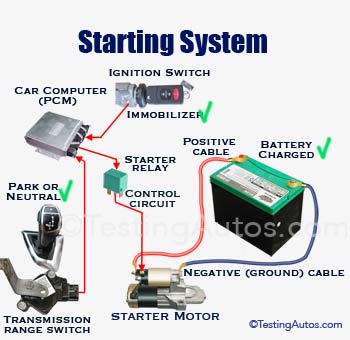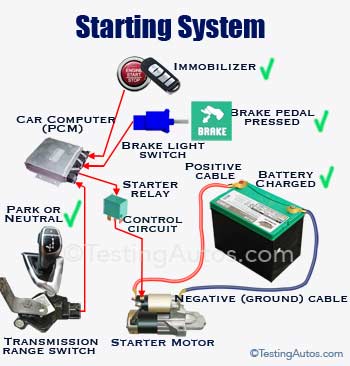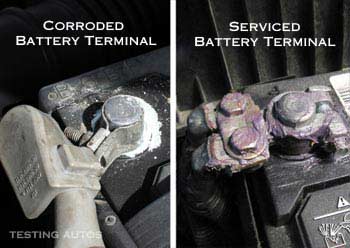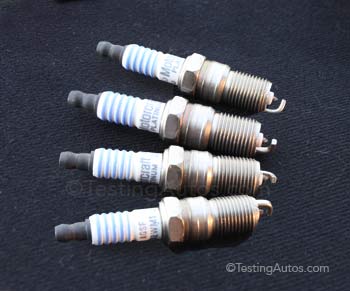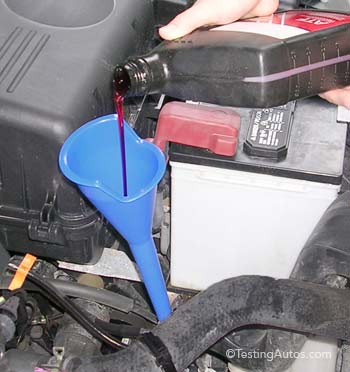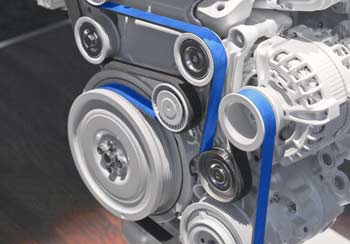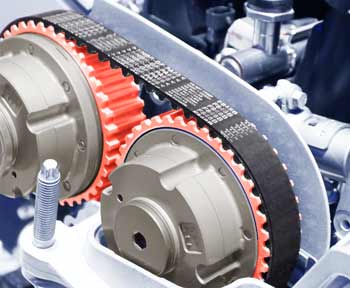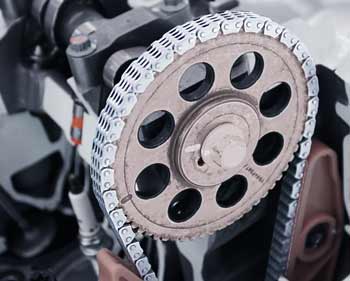Troubleshooting a Car That Won't Start: Simple Steps for Everyone
By Vlad Samarin November 19, 2023
This happens quite often to many cars. If yours refuses to start, don't panic. Let's figure it out step by step.
1. Check the Basics:
Before you dive into car troubleshooting, ensure your car is in the right gear. If it's an automatic, make sure it's in "Park." If it doesn't start in "Park," try starting it in "Neutral."For a manual car, the clutch pedal must be depressed, and the gear must be in neutral. For cars with a Start button, the brake lights must work for a car to be started. If the brake lights don't light up when pressing the brakes, the brake light switch could be bad.
When starting, try jiggling the ignition key. If there's a problem with the ignition lock or switch, this may help. In the case of a Start button, try pressing it repeatedly; the Start/Stop switch itself could be bad.
If the ignition key won't turn, try turning the steering side to side while turning the key at the same time.
If the red or amber security or key-shaped light is blinking while starting the car, there is a problem with the immobilizer. Try using a second key.
2. Battery Issues:
Your car's battery is like its heart. If it's weak or dead, your car won't start. Signs of a weak or dead battery include:- The lights on the dash appear dimmer than normal. Dimming lights indicate a drop in voltage, a sign of a weak battery.
- Turn the wipers on; if they move slower than usual, it's also a sign of a weak battery.
- If, when starting the car, you notice that the engine cranks more slowly than usual or you can hear a rapid clicking sound, the battery is most likely weak.
3. Listen Up:
Assuming the battery is good, listen carefully when starting your car. If you hear a clicking noise, it could be the starter. The starter is a small motor that turns over your engine to start it. If it's not working, you might hear nothing or a single click. Sometimes, a bad starter may sound like it's spinning but not turning over the engine. If you suspect the starter is bad, it will need to be replaced. Read more: When does the starter motor need to be replaced? If the starter motor cranks normally, but the engine won't start, this could be caused by a variety of problems. Examples include low fuel level, a bad fuel pump or fuel pump relay, a bad crankshaft position sensor, a bad mass airflow sensor, a stretched timing chain, or low compression. The engine must be properly diagnosed to determine the cause.How s Starting System Works
The starting system in a car is a team player, involving the starter motor, starter cables, battery, and the starter motor control circuit. Starting your car is a process that unfolds in several steps. Let's break it down:Starting System with Ignition Key
- The car's computer, known as PCM, checks the ignition key's code against the one stored in the PCM (immobilizer). If there's a match, the starter circuit gets the green light. If not, the security warning light will flash, and the starter circuit stays disabled.
- The computer makes sure the transmission is in Park or Neutral (or the clutch is depressed in manual transmissions). Automatic transmissions rely on the transmission range switch, while manual transmissions use the clutch pedal position sensor.
- If all checks pass, the computer activates the starter motor through the control circuit and starter relay. Of course, the battery needs sufficient charge for the starter motor to kick in.
Starting System with Push Button Start
- For cars with a push-button start, the security system wirelessly communicates with the fob, ensuring its code matches the one in the PCM. If the fob battery is weak, it might need a close encounter with the start button.
- The PCM verifies that the automatic transmission is in Park or Neutral (via the transmission range switch) or that the clutch pedal is down in manual transmissions.
- In automatic transmissions, the PCM checks the brake light switch signal to ensure the brake pedal is pressed.
- If all the checks are a go, and the battery is ready to roll, the PCM engages the starter motor through the starter relay and control circuit.
Starter Motor Control Circuit Issues
For either system to work, the starter motor control circuit must be in shipshape condition. A corroded or loose connector at the starter motor or a faulty starter relay can sabotage the starter motor's performance.Mechanics do a power check at the starter control terminal. If there's 12-volt power but no action from the starter motor, it's likely the motor itself that's faulty, assuming the battery and cables are in good shape.
If there's no 12-volt power, the starter relay takes the blame. If it doesn't click during startup, the issue lies upstream.
The starter motor requires very high electric current to operate
The starter motor runs on the 12-volt car battery and demands a hefty electric current. A weak battery or corroded cables can hinder its operation. The battery must be charged, and cables need to make solid connections for the starter motor to do its job.Loose or corroded cable connections or battery terminals like in the photo can be the culprits behind a silent starter motor.
